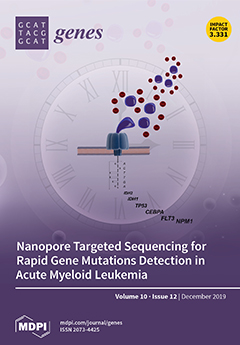Anti-Mullerian hormone (AMH) is an important reproductive marker of ovarian reserve produced by granulosa cells (GCs) of pre-antral and early-antral ovarian follicles in several species, including cattle. This hormone plays a vital role during the recruitment of primordial follicles and follicle stimulating hormone (FSH)-dependent follicular growth. However, the regulatory mechanism of AMH expression in follicles is still unclear. In this study, we compared the expression of
AMH, AMHR-II, BMP2, BMP6, FSHR, and
LHCGR genes during follicular development. In-vitro expression study was performed with and without FSH for
AMH, AMHR-II, BMP2, and
BMP6 genes in bovine GCs which were isolated from 3–8 mm follicles. Association among the mRNA expression and hormone level was estimated. GCs were collected from small (3–8 mm), medium (9–12 mm) and large size (13 to 24 mm) follicles before, during onset, and after deviation, respectively. Further, mRNA expression, hormones (AMH, FSH, and LH), apoptosis of GCs, and cell viability were detected by qRT-PCR, ELISA, flow cytometry, and spectrophotometry.
AMH, AMHR-II, BMP2, and
FSHR genes were highly expressed in small and medium follicles as compared to large ones. In addition, the highest level of AMH protein (84.14 ± 5.41 ng/mL) was found in medium-size follicles. Lower doses of FSH increased the viability of bovine GCs while higher doses repressed them. In-vitro cultured GCs treated with FSH significantly increased the
AMH, AMHR-II, and
BMP2 expression levels at lower doses, while expression levels decreased at higher doses. We found an optimum level of FSH (25 ng/mL) which can significantly enhance
AMH and
BMP2 abundance (
p < 0.05). In summary,
AMH, AMHR-II, and
BMP2 genes showed a higher expression in follicles developed in the presence of FSH. However, lower doses of FSH demonstrated a stimulatory effect on
AMH and
BMP2 expression, while expression started to decline at the maximum dose. In this study, we have provided a better understanding of the mechanisms regulating
AMH, AMHR II, and
BMP2 signaling in GCs during folliculogenesis, which would improve the outcomes of conventional assisted reproductive technologies (ARTs), such as superovulation and oestrus synchronization in bovines.
Full article






